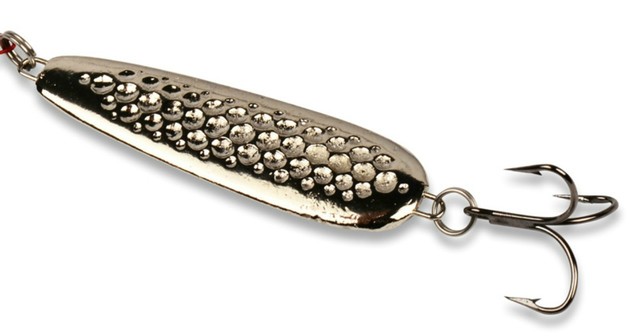September Saltwater Lure of the Month: Wizard Custom Tackle's Double Header Jigging Spoon
DOUBLE HEADER JIGGING SPOON Hand Made in the U.S.A. The
Double Header Jigging Spoon is designed to have two different actions.
1)Head first as packaged works especially well around deep
water docks and breakwaters like those normally found at the dam end of most
highland reservoirs. The Double Header Jigging Spoon is particularly effective
when pitched into the dock wells or along the breakwater and allowed to fall to
the desired depth. Then sweep the spoon up and allow it to fall back,producing
a reaction strike. The unique design of the Double Header Spoon allows it to
swim back under docks and floating breakwaters. Fishing the Double Header with
the stinger hook provided can produce two fish at a time action.
2)Switching the hooks to the opposite end creates a more
controlled subtle action particularly effective on fish schooled under bait
fish. This method is very effective around bridge piling sand standing timber.
You can take two at a time when used with the stinger hook provided.
3)The third method can be used with either hook placement.
Simply drop the spoon to the bottom and hop or stroke the spoon up, then allow
it to fall back. Look for fish on under waterhumps, creek channel bends or
points and bluff ends. Strike usually occurs at the top of your lift or as the
spoon falls back in all three methods. Follow your spoon as it falls on a
slightly slack line to allow the spoon to produce its maximum action. Watch
your line for any indication of a strike or hesitation in the spoons
fall.STRIKE IMMEDIATELY!TIP: You can affect the spoons rate of fall by changing
the line weight you use for example changing the line from 12 lbs test to 17 or
20 lbs test will slow the rate of fall. Going lighter will cause the spoon to
fall faster. Effective on all species of game fish.

